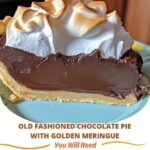Step-by-Step Instructions:
1️⃣ Prepare the Oven and Cake Pan:
Preheat your oven to 320°F (160°C). Grease an 8-inch round cake pan and line it with parchment paper. For a smoother result, wrap the outside of the pan with aluminum foil to prevent water from seeping in during baking (this is called the water bath method).
2️⃣ Melt the Cream Cheese and Butter:
In a medium saucepan, melt the cream cheese and butter over low heat, stirring occasionally until smooth. Remove from the heat and let it cool slightly.
3️⃣ Prepare the Egg Yolk Mixture:
In a separate bowl, whisk together the egg yolks and granulated sugar until the mixture is smooth and light in color. Add the lemon zest to the egg yolk mixture for a fresh, citrusy touch.
4️⃣ Mix in the Dry Ingredients:
Sift together the all-purpose flour and cornstarch. Gradually add this dry mixture to the egg yolk mixture while whisking to prevent lumps from forming.
5️⃣ Combine the Cream Cheese and Egg Mixture:
Once the cream cheese and butter mixture has cooled slightly, slowly pour it into the egg yolk mixture while stirring constantly to ensure it’s well combined.
6️⃣ Add the Heavy Cream:
Pour in the heavy cream and whisk until everything is well incorporated. The batter should be smooth and slightly runny in consistency.
7️⃣ Prepare the Water Bath:
Place your prepared cake pan in a larger roasting pan. Fill the roasting pan with hot water until it comes halfway up the sides of the cake pan. This will help the cheesecake bake evenly and prevent cracking.
8️⃣ Bake the Cheesecake:
Carefully transfer the pan to the preheated oven and bake for 55-60 minutes. The cheesecake should be slightly golden on top and a bit wobbly in the center. Turn off the oven and let the cake cool in the oven for 1 hour with the door slightly ajar. This helps prevent the cheesecake from shrinking.
9️⃣ Chill and Serve:
After the cheesecake has cooled, remove it from the water bath and refrigerate for at least 4 hours, preferably overnight. Once chilled, remove the cheesecake from the pan, and slice into wedges to serve. It’s best enjoyed cold!
Pro Tips for Perfect Japanese Cheesecake:
- Water Bath is Key: The water bath ensures the cheesecake bakes evenly and prevents cracks, so don’t skip it!
- Room Temperature Ingredients: For a smoother batter, ensure the cream cheese and butter are at room temperature before melting.
- Don’t Overmix: When adding the dry ingredients to the egg yolks, be gentle to avoid deflating the batter.
- Chill Completely: Japanese Cheesecake is best served chilled, as it sets nicely and achieves that melt-in-your-mouth texture.
Why You’ll Love This Japanese Cheesecake:
- Fluffy Texture: Unlike traditional cheesecakes, this one has a light, airy texture that feels almost like a soufflé.
- Delicate Flavor: The balance of cream cheese, butter, and a hint of lemon zest makes for a subtle yet satisfying taste.
- Perfect for Any Occasion: Whether it’s a birthday, dinner party, or a casual treat, this cheesecake is a showstopper.
Nutritional Information (per serving):
- Calories: 230
- Protein: 5g
- Carbs: 16g
- Fat: 17g
- Fiber: 0g
FAQ About Japanese Cheesecake:
Can I use a different pan size?
You can use a different-sized pan, but you’ll need to adjust the baking time. A smaller pan will require slightly more baking time, while a larger one may need less. Keep an eye on the texture to gauge doneness.
Can I make this cheesecake ahead of time?
Yes! Japanese cheesecake can be made the day before serving. In fact, it’s often better after sitting in the fridge for a few hours, as it allows the flavors to meld and the texture to firm up.
Can I freeze this cheesecake?
Yes, this cheesecake freezes well. After cooling and chilling, wrap it tightly in plastic wrap and foil. It can be frozen for up to 3 months. Thaw in the fridge overnight before serving.
Common Problems and Fixes:
Cracking Top?
If the cheesecake cracks, it might have been overbaked or the temperature change was too rapid. Try cooling the cheesecake slowly by leaving it in the oven with the door ajar before refrigerating.
Cheesecake Too Dense?
If your cheesecake is denser than expected, it might not have been mixed enough or baked at too high of a temperature. Be sure to bake at a low temperature and gently fold the ingredients for the lightest texture.
Flavor Variations You Can Try:
- Matcha Japanese Cheesecake: Add 1-2 teaspoons of matcha powder to the batter for a unique green tea twist.
- Berry Topping: Top your cheesecake with fresh berries or a berry compote for a fresh, tangy contrast to the richness of the cheesecake.
- Chocolate Cheesecake: Add some melted chocolate to the batter for a decadent chocolate version of this Japanese favorite.
Why Japanese Cheesecake is Perfect for Any Occasion:
This airy, fluffy cheesecake is ideal for anyone looking for a lighter, less rich version of traditional cheesecake. Its delicate texture makes it perfect for tea time, dessert buffets, or any gathering where you want a refreshing, melt-in-your-mouth treat.
Success with Japanese Cheesecake:
This Japanese Cheesecake will become your go-to dessert for any special occasion or whenever you’re craving something soft, airy, and delicious. The subtle flavor and perfect texture will have everyone asking for the recipe!
For more cheesecake variations, check out New York Cheesecake or Strawberry Swirl Cheesecake.
Loved this Japanese Cheesecake? Share the recipe with your friends on social media and leave a comment below to let us know how it turned out!

